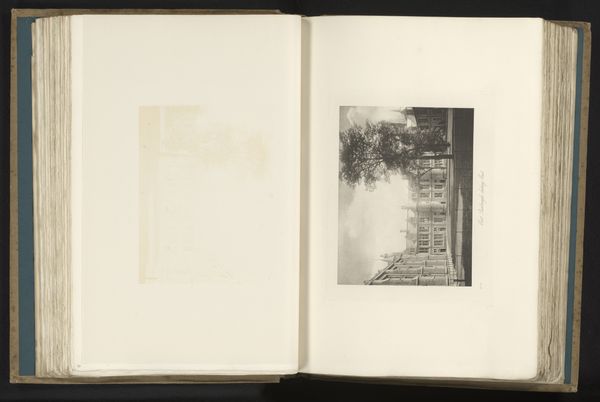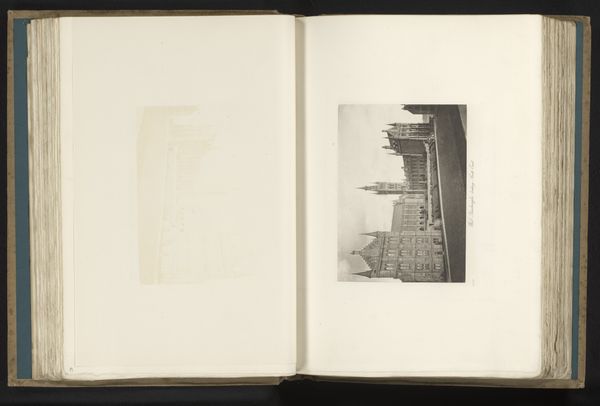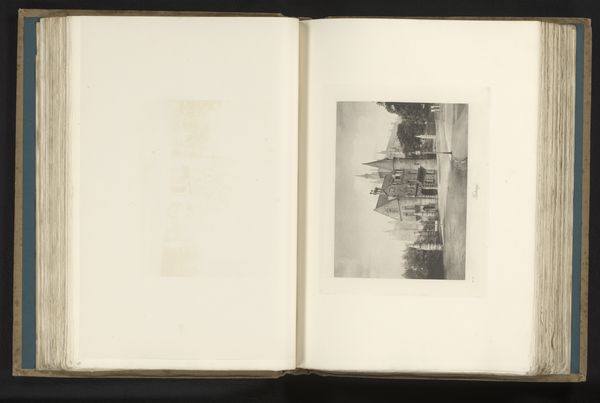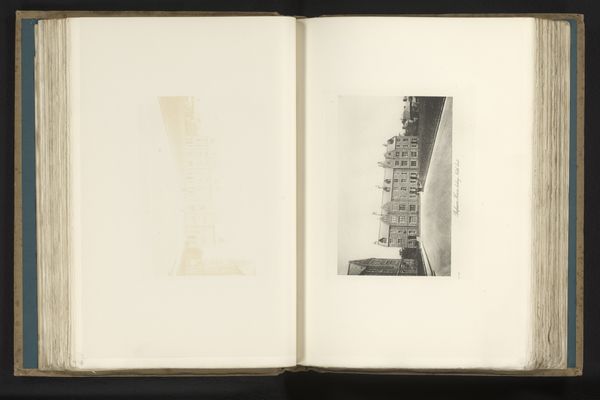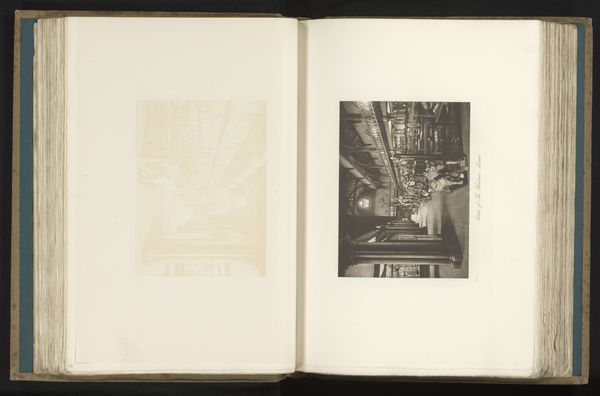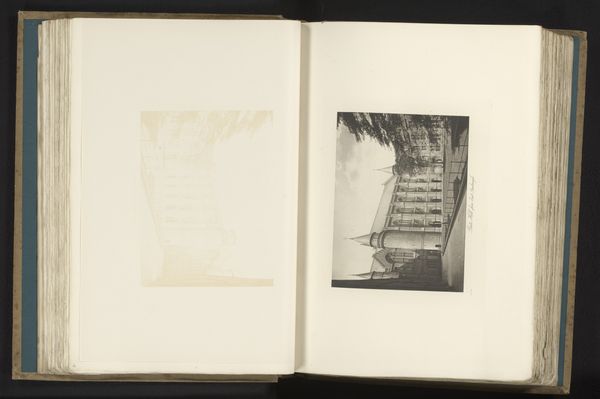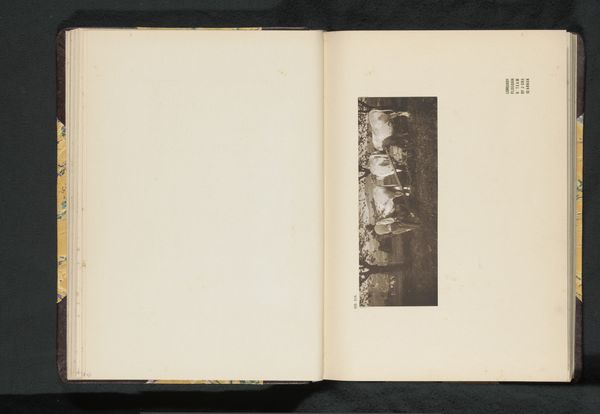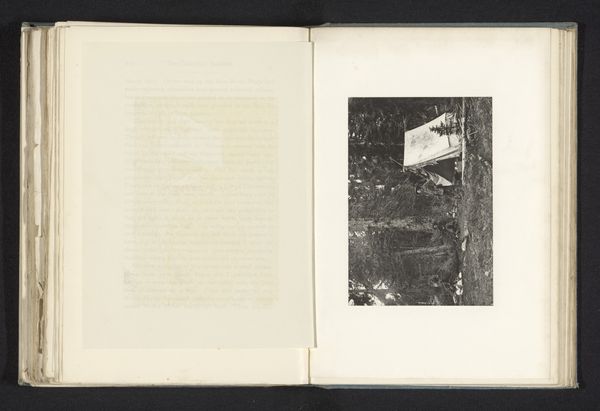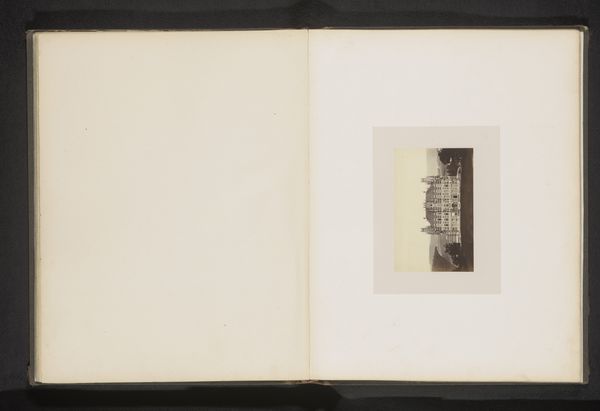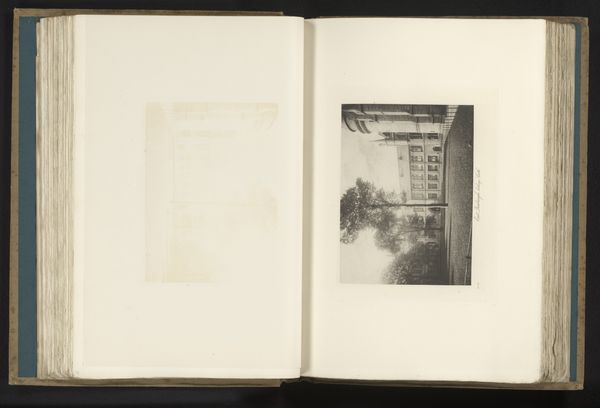
print, photography, albumen-print, pendant
#
aged paper
#
homemade paper
#
ink paper printed
#
paperlike
# print
#
sketch book
#
landscape
#
paper texture
#
photography
#
hand-drawn typeface
#
folded paper
#
thick font
#
cityscape
#
albumen-print
#
historical font
#
pendant
Dimensions: height 143 mm, width 197 mm
Copyright: Rijks Museum: Open Domain
Curator: Before you is a page from an album, featuring an albumen print that captures the "Professorenwoningen van de universiteit van Glasgow"—or Professor's Houses of the University of Glasgow— dating to before 1891. It’s an exterior view, almost documentary in its style. What are your initial thoughts? Editor: It's striking how unassuming it is. Given its age, and knowing these are faculty residences, I expect something grander. This feels...almost ordinary, in its presentation. It definitely looks like an image plucked straight from an antique photo album! The buildings remind me of something out of Dickens, but very gray. Curator: That’s insightful. The "ordinariness," as you put it, might reflect the image's intent. As an albumen print within an album, it was likely intended for a private audience, perhaps university alumni or families, not necessarily for public display or to project power. Editor: I see your point, and that definitely recalibrates my reading of it. Who had access to albums like this back then? Were these potentially tools for solidifying class boundaries or institutional identity? What does that choice to document faculty housing say about how universities perceive their standing? Curator: Those are crucial questions. Access, of course, was limited by socioeconomic factors, shaping both the production and consumption of such images. This view participates in shaping and controlling the narrative of the university itself, its power manifested through these buildings—a kind of silent assertion of institutional permanence and success. Editor: Right, it is as if to say, "Look at these structures, monuments to learning, even where its teachers dwell". Yet there is something stark here; a city and its inhabitants contained by these boundaries that speak of progress for some, and not for others. I also keep looking at this and asking who is left out of the picture. What sort of labour, extraction, exploitation are conveniently erased when these images of “grand learning” are created? Curator: And that critique brings a much-needed tension to our understanding. The photograph serves not merely as a visual record, but as a complex statement about institutional values and priorities. Thanks for drawing this perspective to the foreground. Editor: Thank you! It’s crucial that we confront these narratives within art to broaden our comprehension of culture and art and ensure we are constantly acknowledging history and, most of all, who it overlooks.
Comments
No comments
Be the first to comment and join the conversation on the ultimate creative platform.

